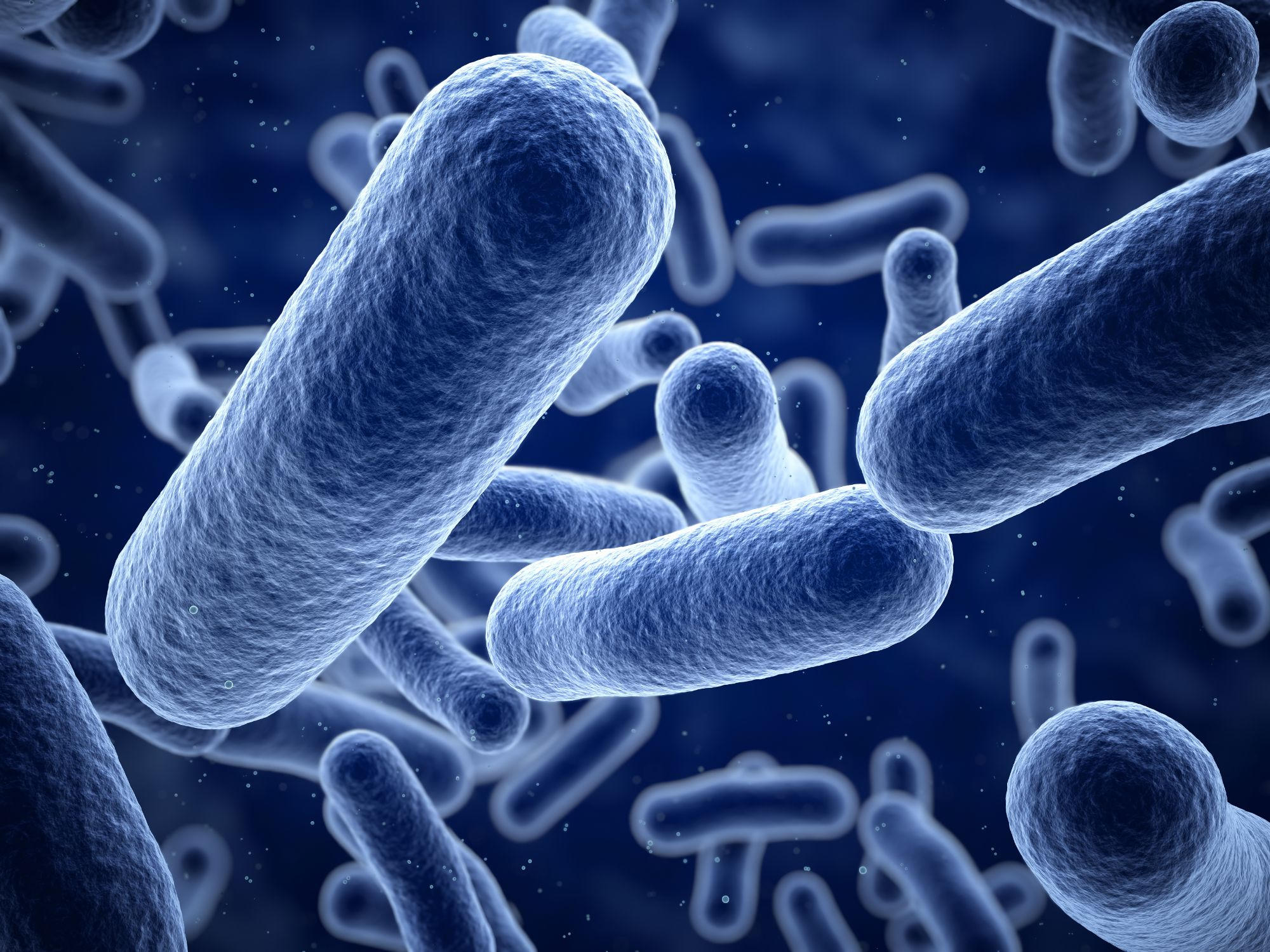
[ad_1]

லிஸ்டீரியா மோனோசைட்டோஜென்கள் என்பது ஒரு வகை லிஸ்டீரியா லிஸ்டீரியோசிஸ் எனப்படும் தீவிரமான மற்றும் சில சமயங்களில் ஆபத்தான தொற்றுநோயை ஏற்படுத்தும் பாக்டீரியா. இந்த பாக்டீரியா பச்சை பால், மென்மையான பாலாடைக்கட்டிகள் மற்றும் டெலி இறைச்சிகள் உட்பட பல்வேறு உணவுகளில் காணப்படுகிறது, மேலும் அசுத்தமான மண் அல்லது நீர் மூலமாகவும் பரவுகிறது.
லிஸ்டீரியா மோனோசைட்டோஜென்கள், உணவு பதப்படுத்தும் தொழிலில் பொதுவாகக் காணப்படும் ஒரு கொடிய பாக்டீரியா, மனித ஆரோக்கியத்திற்கு குறிப்பிடத்தக்க அச்சுறுத்தலாக உள்ளது. இது கடுமையான நோயை ஏற்படுத்துவது மட்டுமல்லாமல், உலகளவில் உணவு பாதுகாப்பு நடவடிக்கைகளுக்கு எதிர்ப்புத் தெரிவிக்கிறது.
ஆரம்பத்தில், இரண்டு தீங்கற்ற இனங்கள் என்று முன்பு கருதப்பட்டது லிஸ்டீரியா மனிதர்களுக்கு தீங்கு விளைவிக்கும் பல குணாதிசயங்களைக் கொண்டிருப்பதாக சமீபத்தில் கண்டறியப்பட்டது.
தென்னாப்பிரிக்காவில் ஒரு முழு ஜீனோம் சீக்வென்சிங் ஆய்வு, முதல் எழுத்தாளர் டாக்டர் தெண்டோ மஃபுனாவுடன் ஆராய்ச்சியாளர்கள் குழுவிடமிருந்து ஜோகன்னஸ்பர்க் பல்கலைக்கழகம்நாட்டில் காணப்படும் லிஸ்டீரியாவின் சில மாறிவரும் பண்புகளை காட்டுகிறது.
என்பதை ஆய்வு காட்டுகிறது லிஸ்டீரியா இன்னோகுவா விகாரங்கள் வெப்பநிலை, pH, நீரிழப்பு மற்றும் பிற அழுத்தங்களுக்கு எதிர்ப்பை உருவாக்குகின்றன; அத்துடன் ஹைப்பர்வைரலன்ஸ் மரபணு ரீதியாக ஒத்ததாக உள்ளது லிஸ்டீரியா மோனோசைட்டோஜென்கள்.

உணவில் பரவும் பாக்டீரியா லிஸ்டீரியா இன்னோகுவா மற்றும் எல். வெல்ஷிமேரி கொடியவற்றுடன் ஒப்பிடும்போது, அவை பெரும்பாலும் பாதிப்பில்லாதவையாகக் கருதப்படுகின்றன லிஸ்டீரியா மோனோசைட்டோஜென்கள். ஆனால் இந்த இரண்டு இனங்களும் எதிர்பாராத எண்ணிக்கையிலான தீங்கு விளைவிக்கும் பண்புகளை உருவாக்குகின்றன, அவை உணவுப் பாதுகாப்பு நடவடிக்கைகளை பராமரிப்பதை மிகவும் கடினமாக்கும், தென்னாப்பிரிக்காவிலிருந்து ஒரு முழு மரபணு வரிசைமுறை ஆய்வு காட்டுகிறது. பகுப்பாய்வு செய்யப்பட்ட சில விகாரங்கள் வைரஸ் மரபணுக்களை ஒத்திருக்கும் எல். மோனோசைட்டோஜென்கள். கடன்: தெரேஸ் வான் விக், நுண்ணுயிரியல் ஸ்பெக்ட்ரம் மஃபுனா மற்றும் பலர்.
சில விகாரங்கள் எல். இன்னோகுவா மற்றும் எல். வெல்ஷிமேரி குவாட்டர்னரி அம்மோனியம் கலவை (QAC அல்லது QUAT) இரசாயனக் குழுவிலிருந்து பரவலாகப் பயன்படுத்தப்படும் கிருமிநாசினிக்கு எதிர்ப்புத் தெரிவிக்கும் மூன்று மரபணுக்களையும் ஆய்வில் காட்டுகிறது.
இரண்டு விகாரங்கள் எல். இன்னோகுவா CRISPR CAS-வகை தகவமைப்பு நோயெதிர்ப்பு அமைப்புகள் உட்பட மூன்று அல்லது அதற்கு மேற்பட்ட நோய்க்கிருமி பண்புகளை அவர்கள் உருவாக்கியுள்ளனர்.
இரண்டு நோய்க்கிருமி அல்லாத விகாரங்கள் லிஸ்டீரியா நாட்டில் உள்ள வணிக உணவு பதப்படுத்தும் வசதிகளில் மூல, உலர்ந்த மற்றும் பதப்படுத்தப்பட்ட இறைச்சிகளில் மாதிரிகள் எடுக்கப்பட்டன.
நோய்க்கிருமி அல்லாதவற்றில் வளர்ந்து வரும் எதிர்ப்பைக் காட்டும் மற்ற ஆராய்ச்சிகளை ஆய்வு உறுதிப்படுத்துகிறது லிஸ்டீரியா உலகின் பிற பகுதிகளில் உள்ள இனங்கள்.
நோய்க்கிருமி இனங்களுடன் பகிரப்பட்ட மரபணுக்கள்
“தி லிஸ்டீரியா இன்னோகுவா நாங்கள் சோதித்ததில் சில மரபணுக்கள் உள்ளன, அவை நோய்க்கிருமிகளிலும் காணப்படுகின்றன லிஸ்டீரியா மோனோசைட்டோஜென்கள்”, என்கிறார் டாக்டர் தெண்டோ மஃபுனா. மஃபுனா உயிர் வேதியியல் துறையைச் சேர்ந்தவர்[{” attribute=””>University of Johannesburg.
These shared genes between L. innocua and L. monocytogenes are also responsible for disease in humans; and stress tolerance such as resistance to the disinfectant Benzalkonium chloride (BC or BAC).

Dr. Thendo Mafuna from the Department of Biochemistry at the University of Johannesburg (UJ). In this composite photo, Dr. Mafuna is in one of the UJ Biochemistry laboratories and facing genetic data for Listeria innocua. Credit: Therese van Wyk, University of Johannesburg.
Research from others has shown that though Listeriosis is rarely caused by L. innocua, it does happen more often in people with compromised immune systems, he adds.
Benzalkonium chloride (BAC) is a member of a group of chemicals called Quaternary ammonium compounds, or QUATs. Quats are found in many common disinfectant products. They have been shown to be highly effective at killing bacteria, fungi, and viruses.
All the L. innocua strains they tested also had the complete LIPI-4 hypervirulence gene sequence, which can cause disease in humans, he says. The LIPI-4 sequence they found in L. innocua is identical to that found in pathogenic L. monocytogenes, as recorded by the Pasteur Institute in Paris, France.
From raw, dried, and processed meats
The samples and isolates analyzed in this study were collected between 2014 and 2019 by the South African Government’s Department of Agriculture, Land Reform, and Rural Development (DALRRD). These were submitted to the Agricultural Research Council (ARC) at Onderstepoort Veterinary Research SA for analysis.
In total, 258 isolates from butcheries, abbatoirs, retail outlets, cold stores, and processing facilities all over the country were studied. Of these, 38 were found to be nonpathogenic L. Innocua; and another three isolates found to be nonpathogenic L. welshimeri.
The isolates came from raw whole, raw processed, dried, and processed cooked, beef, chicken, and pork meats. Dr. Itumeleng Matle at the Bacteriology Division, ARC in Onderstepoort did the microbiological analysis of Listeria isolation and identification.
The Whole Genome Sequencing (WGS) was done by Dr. Rian E. Pierneef at the ARC’s Biotechnology Platform at Onderstepoort.
Mafuna then compared the genome sequences with those recorded by the Pasteur Institute, in Paris, France; and performed the analysis for the study.
On the lookout
“We need to look at our own facilities in South Africa to really see what is happening. Our analyses of these bacteria can help us predict which sequence types to be on the lookout for,” says Mafuna.
It is the number of harmful characteristics that the L. innocua strains share with L. monocytogenes that is concerning, he adds.
Food processors need to look out for Listeria innocua because it is becoming resistant to disinfectants that are used in industry to get rid of them. It would also be helpful to try different types of disinfectants to surfaces, he says. Switching from one type to another may prevent or delay the bacteria from developing resistance to one type of disinfectant.
“Big industrial food processors may want to investigate how efficient BC or quat disinfectants are in their facilities. This can be done by taking swabs before cleaning and again after cleaning, culturing those, to see how well the disinfectant regimes are working,” says Mafuna.
Reference: “Comparative Genomics of Listeria Species Recovered from Meat and Food Processing Facilities” by T. Mafuna, I. Matle, K. Magwedere, R. E. Pierneef and O. N. Reva, 6 September 2022, Microbiology Spectrum.
DOI: 10.1128/spectrum.01189-22
The study was funded by the South African Department of Agriculture, Land Reform and Rural Development (DALRRD).
Sample collection was provided by the DALRRD Directorate: Veterinary Public Health. Sample testing and DNA isolation was conducted by the Food and Feed Analysis and General Bacteriology Laboratories of the Agricultural Research Council (ARC): Onderstepoort Veterinary Institute (OVI). Whole Genome Sequencing analyses were conducted at the ARC Biotechnology Platform. This research forms part of Dr. Thendo Mafuna’s doctoral studies registered at the University of Pretoria.
[ad_2]